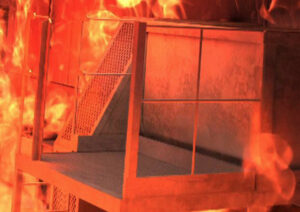
When constructing a building, firestopping and fireproofing can both be essential parts of the process.
When constructing a building, firestopping and fireproofing can both be essential parts of the process. If a fire were to happen, you want to know the steps have been taking to limit injuries or property damage. Businesses, property owners, and facility managers are all responsible for knowing what the differences between these things are and how they can function. Whether it’s firestopping or fireproofing, it may be an essential part of keeping your building protected. Let’s break down how they differ and why you need both.
Initial Confusion
Most of us think of fire safety, and our minds immediately turn to fire sprinklers or alarm systems. As important factors as these may be, they are meant to kick in much later than both firestopping or fireproofing. Due to them being the first line of defense and are somewhat similar in nature, there is a lot of confusion around them, so let’s take a look at each.
Firestopping
Imagine a building as one single block with multiple rooms within. Fires can start in any one of those individual rooms, but if you’re able to stop fires from being spread from one room to another—or more likely, slow it down enough that people can evacuate and emergency responders can show up—you’re in a much better place.
Firestopping refers to the sealant that is applied at points where a fire could spread from one room to another. These include areas where walls meet floors or ceilings and the joints between walls as well. By preventing the spread of fire through these points of weaknesses, it becomes much more likely that property damage can be limited, and people can avoid getting hurt.
Fireproofing
If firestopping is what prevents the spread of fire and harmful gases in a building, think of fireproofing as what protects the actual structural elements of a building. These are the bones of a building that help prevent collapse or irreparable damage. We see fireproofing applied to steel or concrete when a building is constructed in order to keep it standing even in the worst case scenarios.
Building fires can get hot enough to weaken steel beams and cause them to collapse, while overheated concrete may expand and even burst. Both of these are a threat to a building’s structural integrity, as well as anyone in or near the building.
Concrete Visions Will Get The Job Done Right
Concrete Visions has been working with clients for over 25 years. Our G&M Services installers are certified with the industry’s major firestop product manufacturers. As part of our firestop service, we can assess abnormal field conditions and, with the manufacturer’s technical support assistance, provide engineering judgments in a timely fashion to comply with contract specifications. Our Field Mechanics undergo ongoing training, including mandatory monthly safety meetings, weekly Toolbox Talks where safety and equipment information is shred, and trainings on safe work standards and safety best practices.
